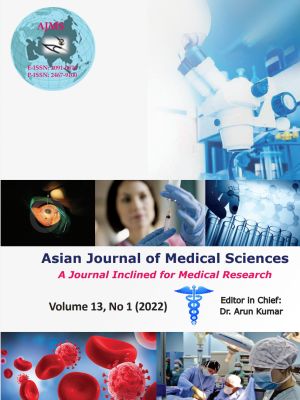A comparative prospective observational study on the use of ulipristal acetate versus mifepristone in reduction of the size of uterine leiomyoma
Keywords:
LeiomyomaAbstract
Background: Fibroid or uterine leiomyoma is the most common benign tumor of the uterus in the reproductive age group and found in one out of every four women. They are symptomatic in 50% of women, with the peak incidence occurring among women in their 30s or 40s. Fibroid can cause a variety of symptoms which include menstrual disturbances commonly menorrhagia and dysmenorrhea. It is a common indication of hysterectomy in Indians. An effective medical treatment option may reduce hysterectomy-associated morbidity and mortality. This study is undertaken to evaluate the efficacy and safety of medical management of myoma and contribution in the reduction of myoma size comparing the two drugs ulipristal and mifepristone.
Aims and Objectives: The study was conducted to compare reduction of menorrhagia (By pictorial blood loss assessment chart score), reduction of fibroid size (using transvaginal ultrasonography), and improvement of hemoglobin (Hb) level. We are also evaluating safety or side effects using these drugs.
Materials and Methods: The study includes 210 patients who are divided into two groups. Group A includes 105 patients who are treated with tablet Ulipristal Acetate 5 mg daily for 3 months and Group B includes 105 patients who are treated with tablet mifepristone 25 mg daily for 3 months.
Results: Ulipristal and mifepristone both are effective in reduction of menorrhagia and improvement of Hb levels, but Ulipristal is more effective in reduction of size of uterine myoma than mifepristone after 3 months of treatment.
Conclusion: Multicentric study over a larger population is required to reach a valid conclusion.
Downloads
Downloads
Published
How to Cite
Issue
Section
License
Copyright (c) 2021 Asian Journal of Medical Sciences

This work is licensed under a Creative Commons Attribution-NonCommercial 4.0 International License.
Authors who publish with this journal agree to the following terms:
- The journal holds copyright and publishes the work under a Creative Commons CC-BY-NC license that permits use, distribution and reprduction in any medium, provided the original work is properly cited and is not used for commercial purposes. The journal should be recognised as the original publisher of this work.
- Authors are able to enter into separate, additional contractual arrangements for the non-exclusive distribution of the journal's published version of the work (e.g., post it to an institutional repository or publish it in a book), with an acknowledgement of its initial publication in this journal.
- Authors are permitted and encouraged to post their work online (e.g., in institutional repositories or on their website) prior to and during the submission process, as it can lead to productive exchanges, as well as earlier and greater citation of published work (See The Effect of Open Access).




